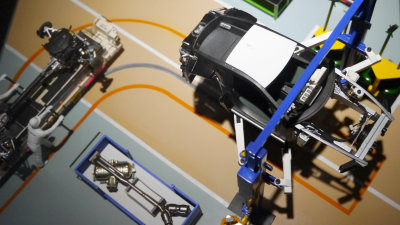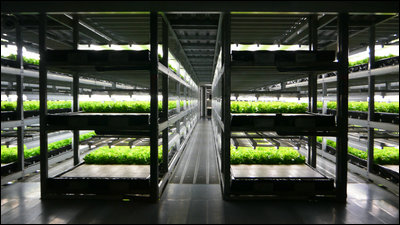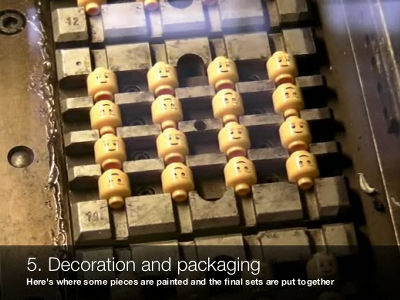I saw the inside of Yanmar's mother factory "Biwa factory" which manufactures various types of engines at a stroke with a high automation rate

In addition to agricultural machinery, construction machinery and ships, energy systems such as power generation equipment,YanmarHas developed various machines and equipment and sends it to the world. This time in Nagahama city, Shiga prefecture"Yanmar Museum"In addition to the fact that one of Yanmar's main engine plants has the latest equipment installedBiwa FactorySo I decided to see what kind of engine the engine was made for since I decided to put it inside the general public.
Yanmar
https://www.yanmar.com/jp/
Arrived at the Yanmar Biwa factory. The factory is located on the bank of Lake Biwa in Nagahama City, Shiga Prefecture.
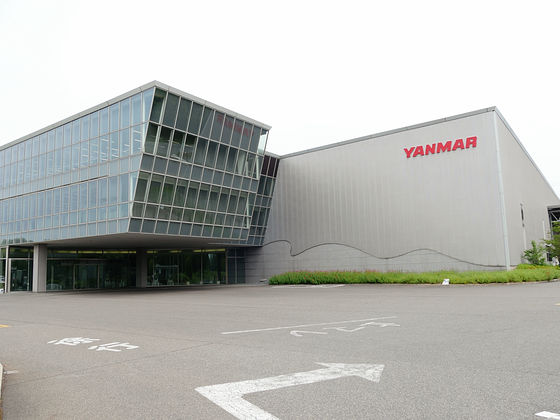
When entering the entrance, the engines produced at the factory were exhibited. The Biwa Plant is engaged in a vertical water cooled diesel engine in the Yanmar GroupMother factoryStarted operation in 1995, it is positioned as. Many kinds and small-volume production technologies have been polished to increase the rate of automation of production lines and respond to customer's needs finely, so that the production technology cultivated at this factory is also utilized at other plants It is said that it is called "Mother factory".
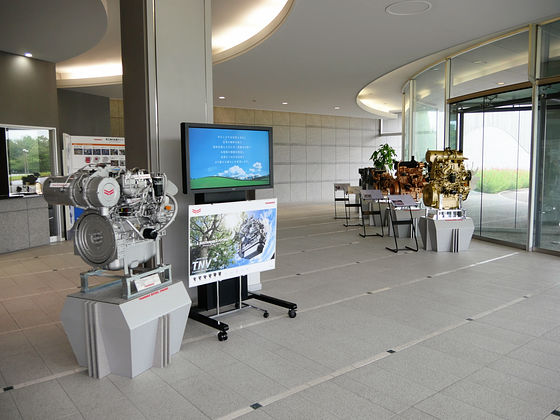
"TNV type" for industrial diesel engines meeting the latest environmental regulations produced at this factory. It is the latest type diesel engine which has cleared the environmental regulation called "Tier 4" and is a common rail type fuel injection device, electronic control, DPF (diesel particulate, particulate matter) that collects particulate matter (PM) such as soot contained in exhaust gas, It is said that it is an engine which can even emit clean exhaust gas than absorbed air by installing a device called a filter.
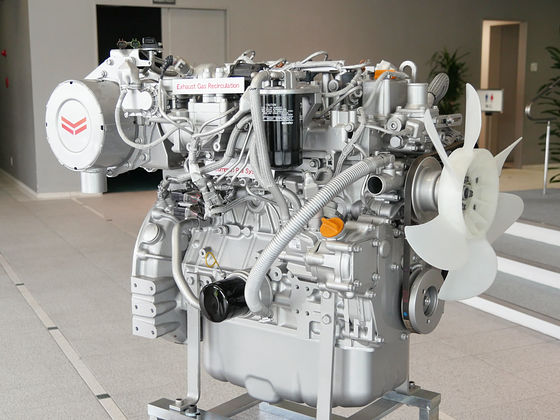
Models that were produced in the past are also exhibited. This engine is the first machine of the "TNE type" engine produced for the first time at the Biwa factory. At the Biwa Factory, in August 2015, 20 years after the start of operationCumulative production of small industrial diesel engines exceeded 5 million unitsI heard he did.
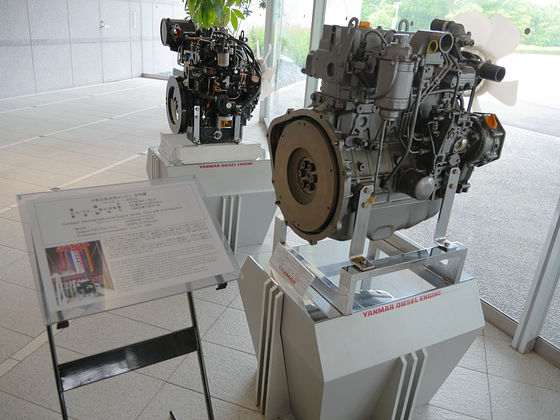
The Biwa Plant is a factory dedicated to producing engines and has annual production capacity of 400,000 engines. Diesel engines for construction machines, diesel engines for energy (electricity generation), gas engines, etc. are also being produced, as well as diesel for agricultural machines. In addition, Yanmar also conducts business to produce engines for other companies, and it seems that Yanmar's engines are often used for vehicles of major construction equipment makers who have heard of everyone.
When entering the factory, a corner was set up that summarizes the outline of the Biwa Factory and also used for improvement activities of the entire plant. The interior feels like hot and peculiar to the factory and smell of oil.
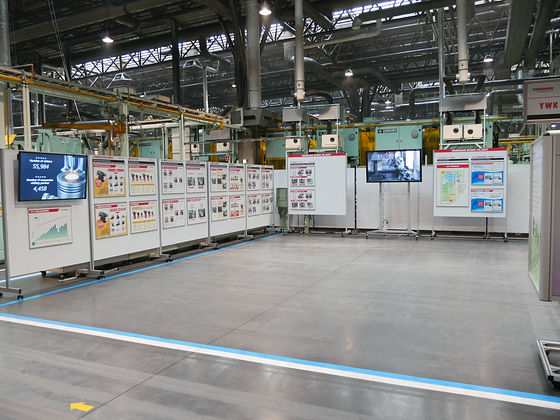
At the Biwa Factory, we incorporate the idea called "leveling production" and respond to assembling various kinds of engines on the same production line. As a result, we are able to respond flexibly to orders from a wide range of customers.
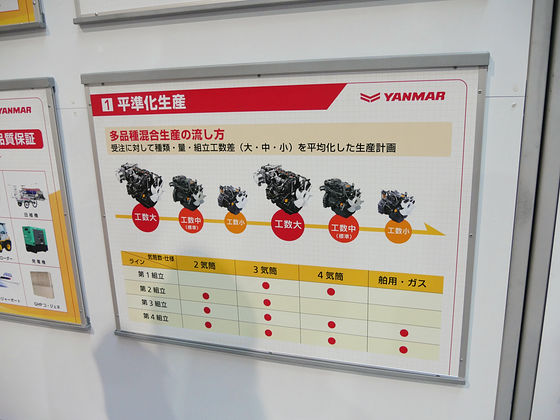
If the engine changes, the size and number of parts to be installed will be different, but the production line of this factory incorporates its own production management system and responds. Specifically, in addition to managing production by managing all parts with barcodes and ID tags, it is also used for management of production history.
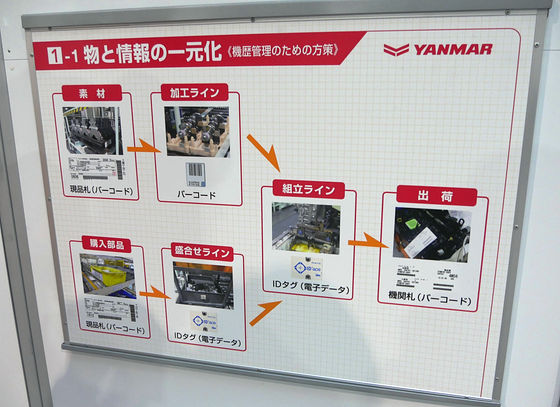
Also, it is interesting that correspondence to this multi-model production is realized also on the automatic assembly line. Automatic assembly according to individual specifications is done by adopting management by the above-mentioned ID tag etc. It is said that development of this system is independently developed by Yanmar, and it seems that Toyota in a cooperative system with Yanmar visits the system.
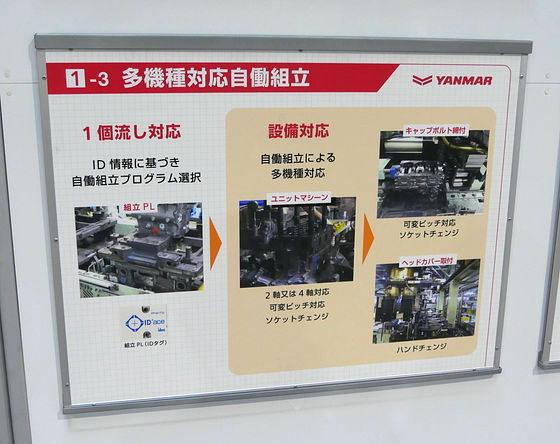
Also, it seems that kaizen activities for improving production efficiency are actively taking place. Improvement proposals from each process and their results are stuck on the panel on the panel. Here, besides detailed suggestions concerning production, even small efforts such as "I want to change the wind direction of the air conditioner because I want to change the air direction of the air condition → is improved and it is easier to work" is contained, and at the production site I realize that small kaizen is gathered and a great improvement in efficiency is realized.
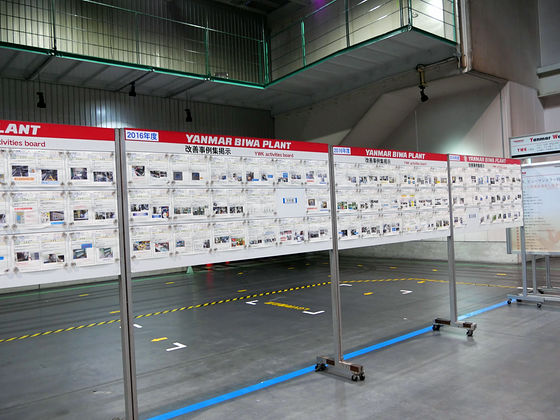
The way of thinking and goals necessary for the staff is clearly "visualized".
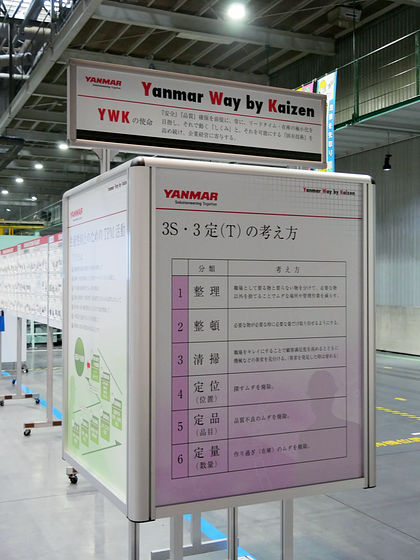
◆ Infiltrate the production line
I showed the actual production line. First of all, "material rack" for managing the parts that become the material of the engine.
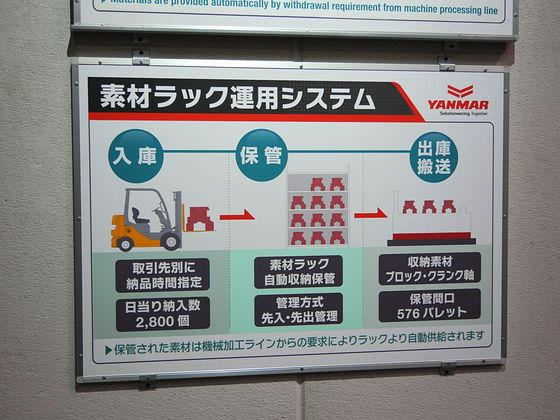
In a space likely to be 10 meters tall, there is a material rack for managing parts of the engine delivered from the supplier.
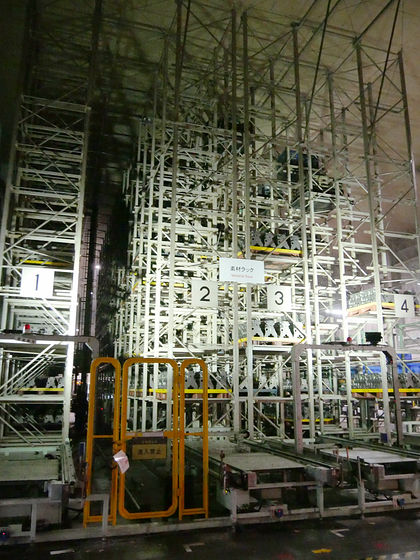
All inventory management and parts transport here are automated and mechanized. When receiving a command from the server managing production, the lift moves in the gap of the material rack which appears white, and the part is automatically taken out from the determined shelf.
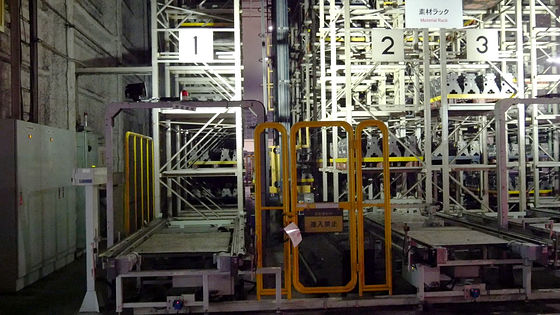
Parts taken out of the shelves together with the pallet are placed in the area in front ......
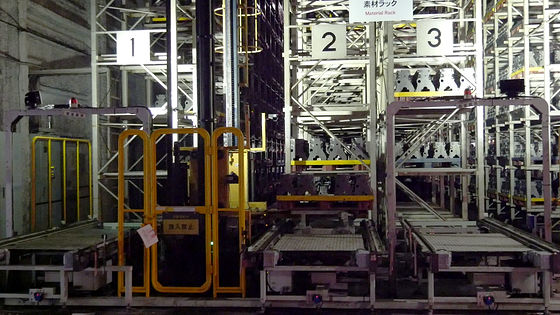
It can be transferred to an unmanned moving car "LGV (Laser Guided Vehicle)". The movement of LGV is also managed by the server.
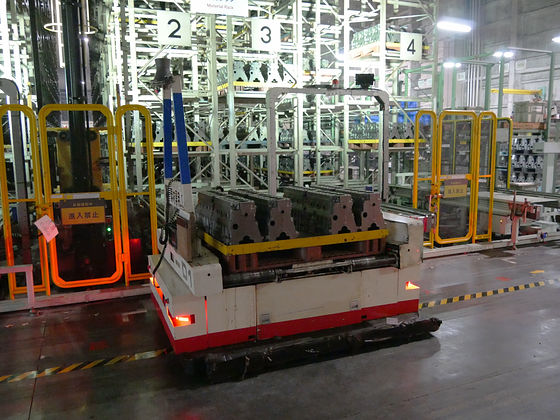
LGV with parts will run around the premises and deliver the necessary parts while playing songs such as "Theme of Lupine the Third". Rotary laser equipment is attached to the top of the LGV, and it is always confirming the position of the car by reflection from a dedicated mirror installed in the factory. A system similar to Google's automated driving car is used, but Yanmar said that this system was introduced over 20 years ago.
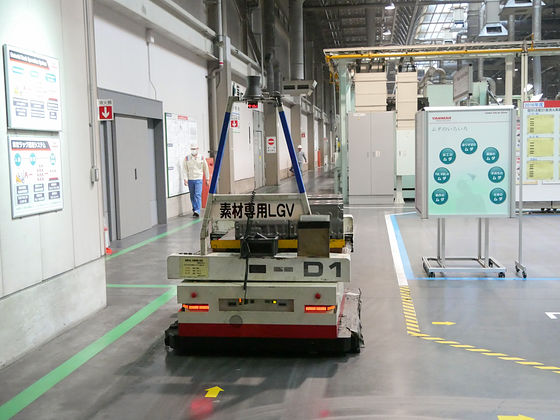
The parts "CYLINDER BLOCK" carried in this way are put into the processing line.
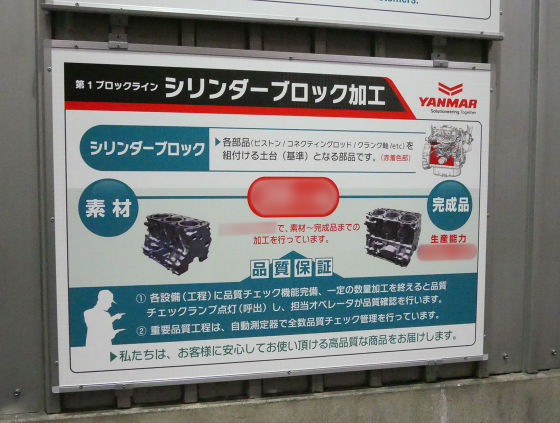
A lot of processing machines aligned side by side. Parts are transported inside this processing machine, and different machining is done on each machine. There are two types of lines that enter from one side and come out to the other and come back to the first side after making a U-turn at the end of the line, but in either case the finished product comes out , It seems that it is aligned on the same side for the next process.
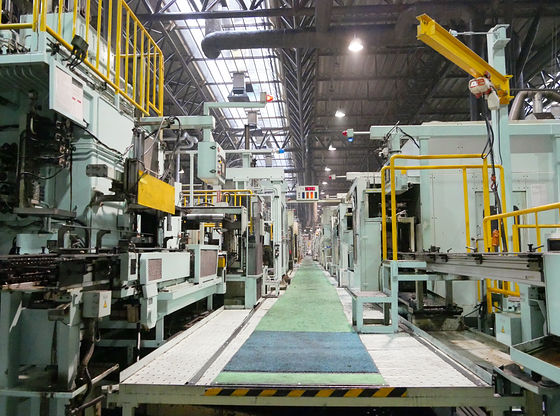
In the line, the robot arm moves quickly, and the material to be processed is set up on the machine. Although cutting mainly for metal cutting is done here, it was not heard much noise, it was in a quiet factory than I imagined.

Completely assembled cylinder blocks are arranged side by side. After this, it is being brought to the assembly line and waiting for it to become the completed form of the engine.
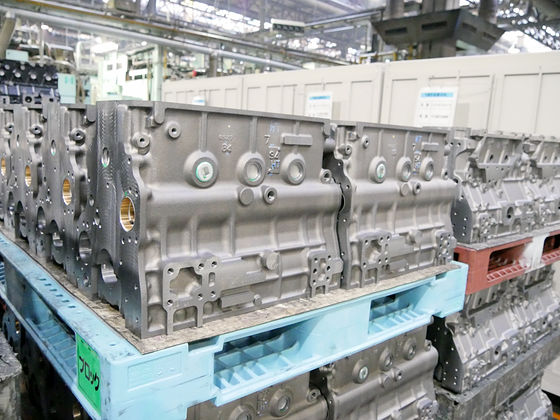
"Flywheel" which stabilizes the rotation of the engine is also parts which are delivered from the supplier as well as the cylinder block. In its acceptance system, detailed ingenuity to increase production efficiency is adopted.
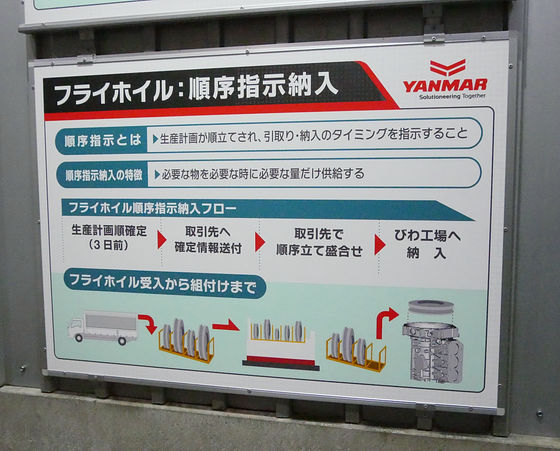
For example, this sight. At first glance it looks like a number of flywheels are lining up in the basket, but in reality all theseConditions arranged in advance according to the production schedule of the factory. A few days before production, the production plan is presented from the factory to the supplier, and the supplier places the flywheel in line with the order and delivers it to the Biwa Factory. This is exactly the sort of scenery for people involved in production with the technique of "Kanban method" that Japan has created, but in fact factories there are a number of such minor contrivances built up is.
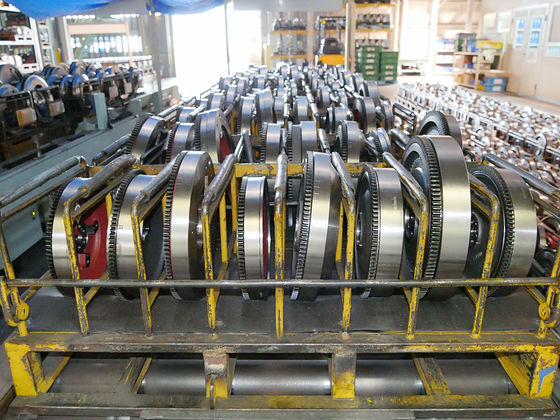
Next is a line that processes "connecting rod (rod)" used inside the engine. The robot sets up the material of the rod one after another to the processing machine and processing is done. Here too, many processes are automated, so that production is done with uniform quality.
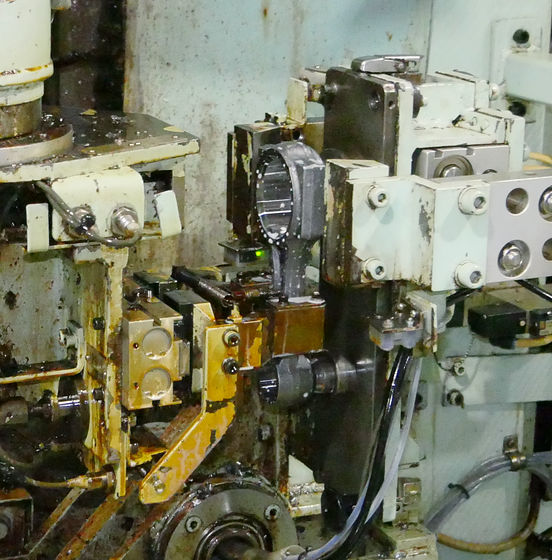
When walking in the venue, the LGV that appeared earlier also carries parts without fail. In addition to grasping the position of the vehicle by the laser, a device that prevents contact with people and obstacles by the proximity sensor is also incorporated, but we were a bit surprised at the beginning as we attacked (approaching) quite a bit.
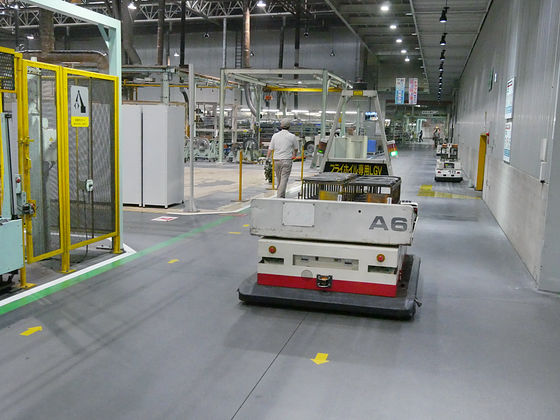
A rack for accepting and managing detailed parts other than the main parts of the engine from suppliers. The delivered parts are stocked first in the rack on the other side and are automatically sent to the front roller as necessary.
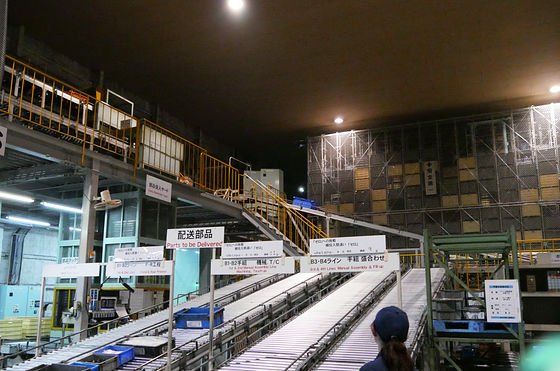
In another place, "Assorting parts" that gathers necessary parts for each engine specification is carried out. At the center of the line, the transporting car for carrying the assorted parts is slowly moving.
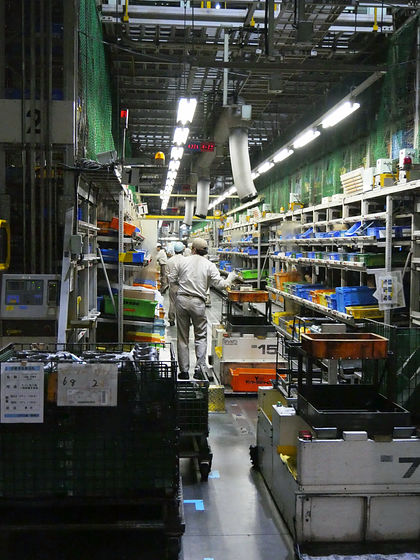
There are all different parts in the basket that is aligned with Gissiri on the shelf. The workers take out the necessary parts from the basket in which the red lamp shines and place them on the transporting car that runs through the aisle, but it seems that it looks like Amazon's huge warehouse. This is also a parts management system unique to factories that manufacture a wide variety of products at once, by introducing clearly the necessary parts with lamps, a system that prevents mistakes in parts is incorporated.
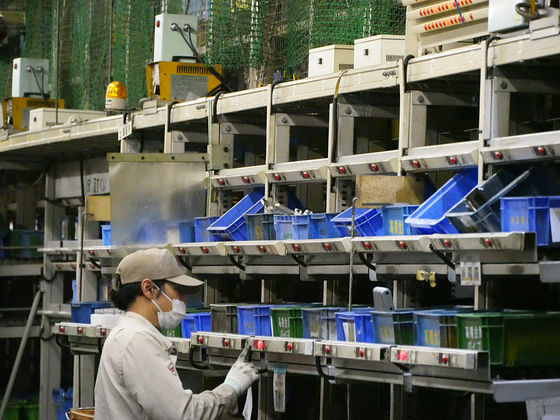
A rack where parts for assortment are stacked. A huge variety of parts are used, and surely all human beings are difficult to manage, not to say that it will be inefficient. Again, it seems that it is indispensable for efficient and accurate production that the robot and the human being are in charge of each other's good work.
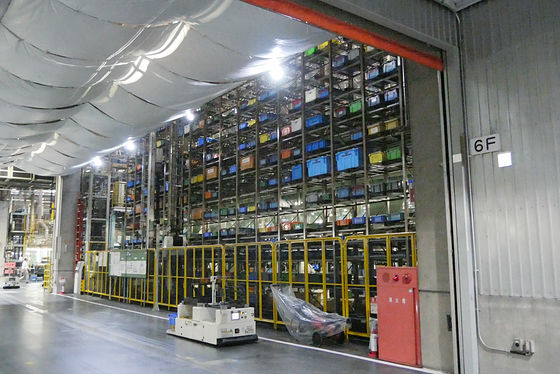
Although it is a factory full of machines, such plants are placed in empty spaces. Plant in the plant ... ....
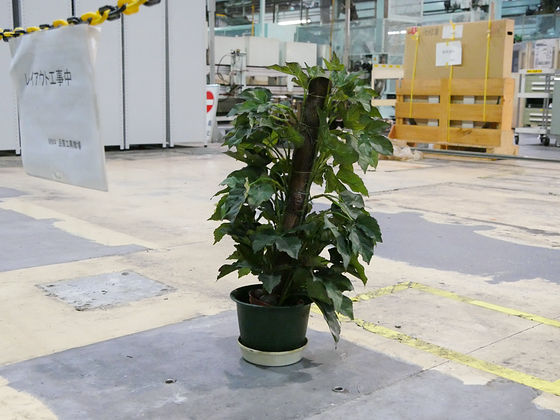
Well, this is the line where the actual engine assembly is done automatically. Although details can not be taken, many machines line up, you can see that the robot arm is busy moving among them.
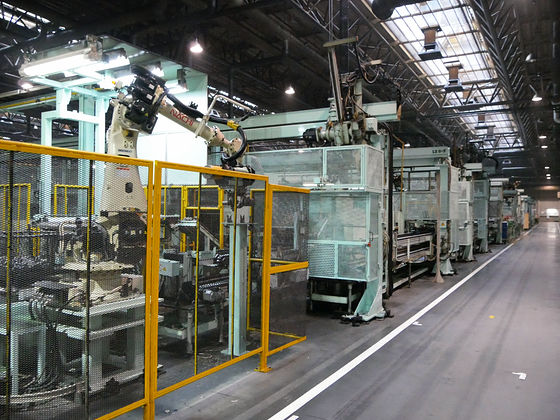
In this line, adjustment of "valve clearance" which greatly affects the performance of the engine is done automatically. Although it is adjustment of valve clearance which may still be fine adjustment even now by specialized craftsmen, it is said that there are not so many other cases that Yanmar is doing this kind of automated machine automatically.
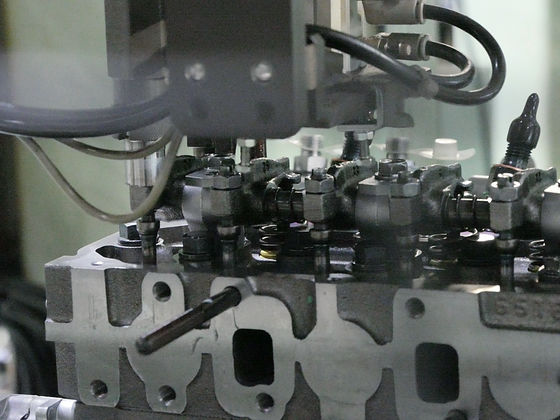
The part management system by ID tag is playing a big role in this automation line. A tag for the tag is attached to each engine body and each basket on which parts are placed, and a unique ID is assigned.
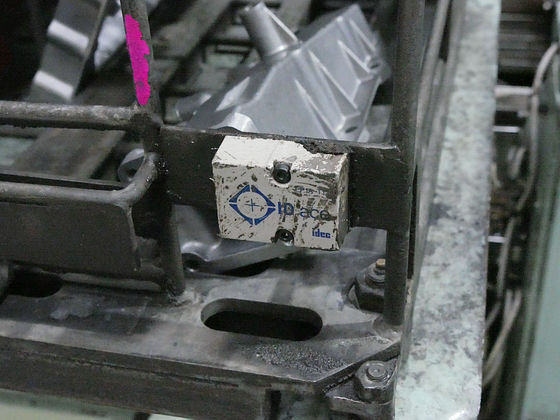
There are countless sensors on the line for reading the chip. By conducting production control with this sensor, machining / work corresponding to the model and management of production history are carried out.
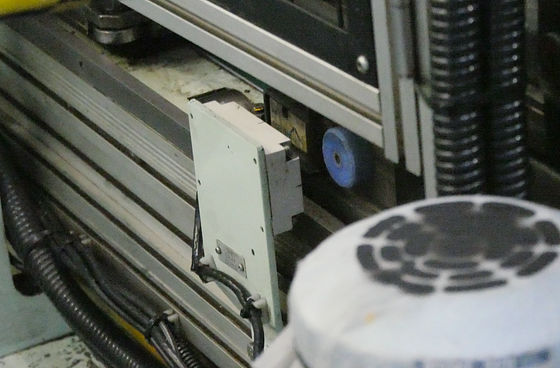
The flywheel delivered from the supplier was also pasted with a two-dimensional barcode for identification.
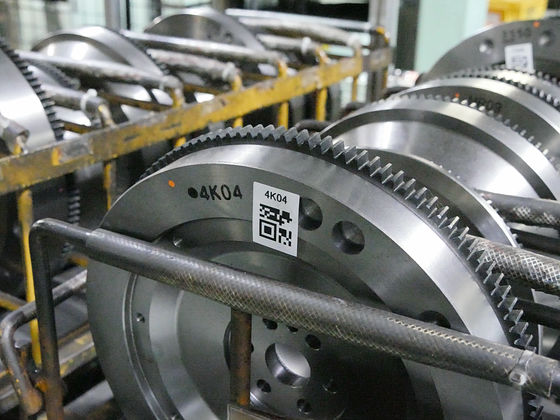
At the Biwa factory in Yanmar, the introduction of such an automated system is being advanced at a high level, and the ratio of automation in the entire manufacturing process reaches as much as 35%. It seems that this is very high as the numerical value of the factory line where 2000 kinds of specification engine are produced.
Although it is an engine that can be assembled automatically in this way, there are parts that can be assembled with human hands.
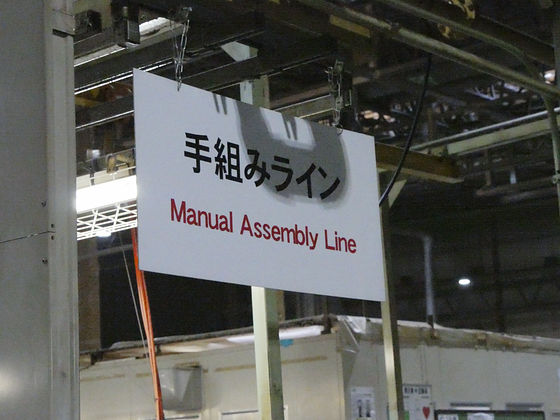
Various kinds of engines are flowing on slowly flowing lines.

Again, various types of engines are running mixed with jumbling. This line flows from the right to the left of the photo, but first it will flow in the order of the car carrying the parts and the engine in the process of being assembled later.
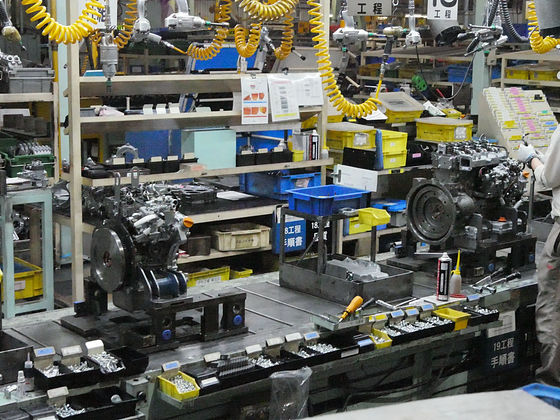
It seems that women are assembling.
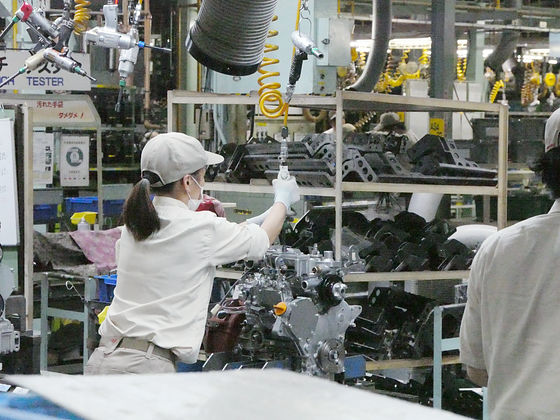
All assembled engines are subjected to inspection machines, and a performance check of about 5 minutes per one car is done.
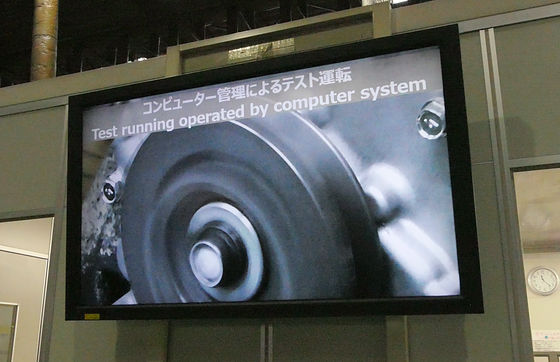
For engines that have been checked, painting and touch-up work for shipping, and final checks are done.
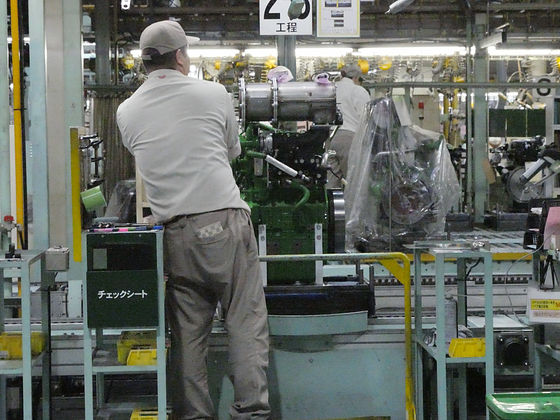
The figure of the female staff who is in charge of the final check. At this factory, about 2000 types and constantly 800 types of engines are being produced, and we check engines of different specifications for each one.
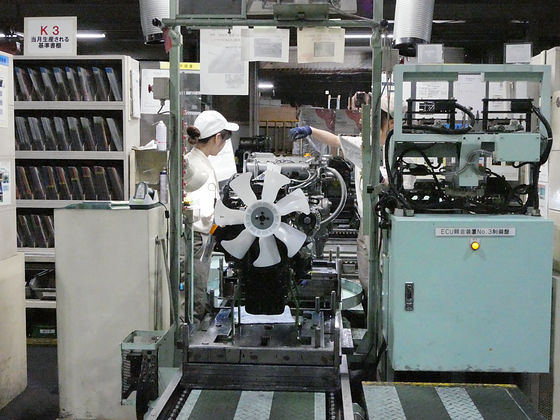
Space where the check is over and the finished engine is lined up. Many products are placed in a very large space, but everything here is said to be shipped within a week.
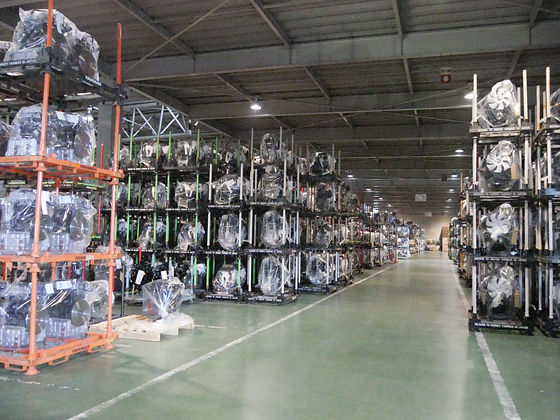
The shipping space is also this size. It was said that a system was established to pack products into containers shipped overseas and to seal up containers until "Banning (bun packing)" was done.
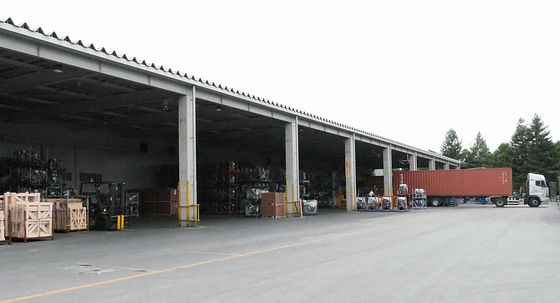
With this appearance, at the Biwa factory in Yanmar, a diesel engine was assembled using the latest equipment's automated line, which was unbearable for machine lovers and factory lovers. I heard that Yanmar's industrial engine business is deployed here based in Nagahama city. Nagahama city is the birthplace of Mr. Yanaga founder Mr. Yanaga, and it can be said that it is literally "the place where Yanmar was born", so that the base was put in this place because it wanted to return to the local That's right.
Related Posts:


